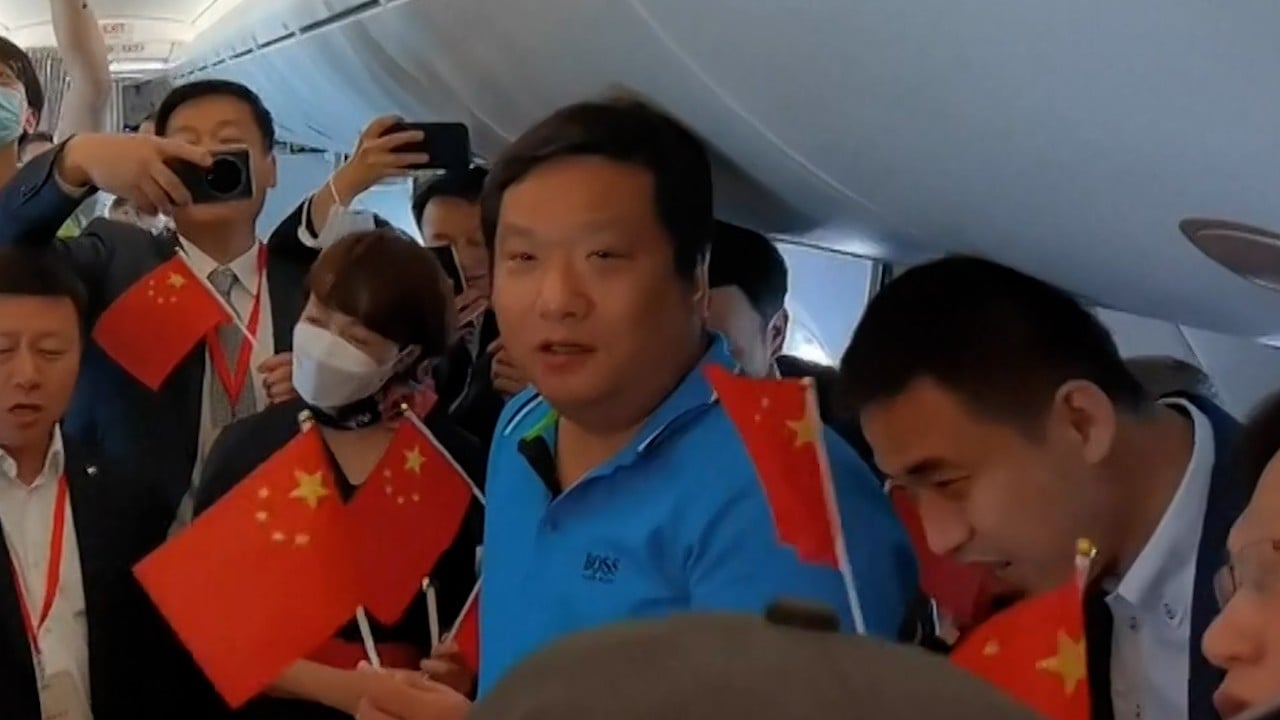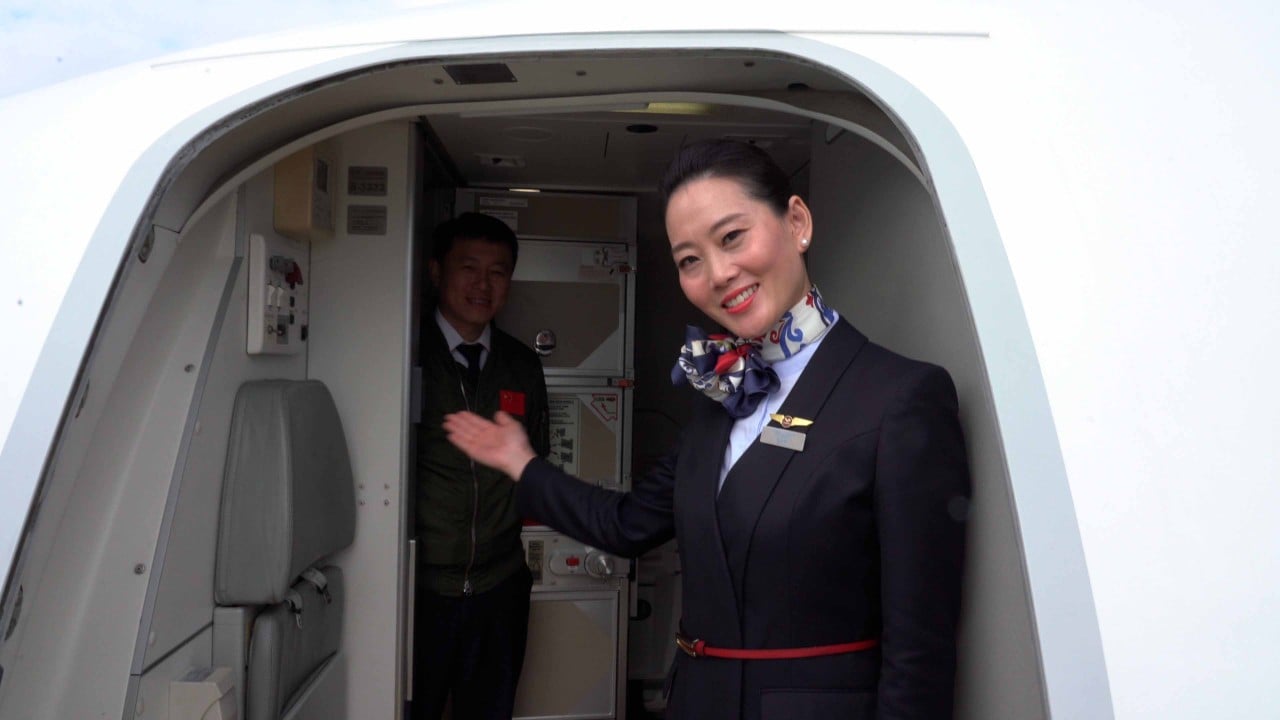
Explainer | How monumental is China’s challenge to build its own jet engine for the C919 as it seeks aviation self-reliance?
- Shanghai-based Aero Engine Corporation of China (AECC) is developing the CJ-1000 high-bypass turbofan jet engine to be used on the C919 passenger jet
- China’s first domestically developed narrowbody passenger jet is using an imported Leap engine since it entered commercial service since May 2023
A review of China’s first turbofan commercial engine for the home-grown C919 passenger jet is set to be given priority by the Chinese aviation regulator this year as the world’s second-largest economy strives to become self-reliant in aviation amid rising advanced technology export restrictions from the United States.
What is the CJ-1000 engine?
The CJ-1000 is a high-bypass turbofan jet engine being developed by the Aero Engine Corporation of China (AECC) at its base in Shanghai, which is also home to the C919.
The CJ abbreviation comes from Chang Jiang, the Chinese name for the Yangtze River.
The engine has been designed to replace the imported Leap engine produced by CFM International – a joint venture between American firm GE Aerospace and France’s Safran Aircraft Engines – which currently powers the C919.
According to Liu Daxiang, deputy director of the science and technology committee at the Aviation Industry Corporation of China (Avic), China lacked experience in the research and development of an engine for commercial aviation.
But after China decided to build the C919 in 2008, the Chinese government set up a company to develop parts and a jet engine for the narrowbody passenger jet that is designed to compete with Boeing’s 737 and Airbus’ A320.
AECC was formally established in 2016, with Chinese defence contractor Avic and the Commercial Aircraft Corporation of China (Comac) – the manufacturer of the C919 – among its stakeholders.
What are the key challenges for the CJ-1000?
While China has made significant progress in engine development in recent years, the design and production of a commercial jet engine is still lagging behind the leading manufacturers in the world.
Avic’s Liu described the ability to make high-bypass turbofan engines as crucial to China’s success in aerospace manufacturing.
But after making a late start to its research and development, Liu acknowledged China has had to catch up with the technology that has already been around for a few decades.
“It’s like leaping from the first generation to the fifth generation [in one go],” Liu said in Shanghai in 2017.
Mechanical failures are among the most common problems seen in Chinese made jet engines, according to research released in 2022 by the Hunan civil-military integration of public service platform, an information provider under the Military-Civilian Integration Development Committee of the Hunan provincial government.
Poor design, a low level of manufacturing and a lack of experience in testing and assembly are also common problems, the research said.
Research by the China Construction Bank last year also suggested weakness in designing turbofan engines could slow China’s progress in making competitive products compared to its Western counterparts.
“China’s aerospace engine industry, represented by AECC, basically has the development and production capabilities for various types of aero engines, but there is still a certain gap compared with [those produced by] advanced Western countries,” the state-owned bank said.
What’s the outlook for China’s engine development?
According to Chinese media reports, AECC has said that it expects the CJ-1000 engine to be certified between 2022 and 2025.
But the US, which holds the lead in aviation technology, has stepped up its export controls on technologies that support the production of advanced semiconductors and gas turbine engines that it said are critical to its national security in the last two years.
And these measures may restrict Chinese companies’ access to using such technology.
A number of AECC subsidiaries have been designated as military end users by the US Bureau of Industry of Security as Washington grows wary of China’s aerospace manufacturing ambitions, and its push for a civil-military fusion strategy.
Exporters of US technology need a licence to sell to companies that have been classified as military end users.
In the long term, competition between China and the US in advanced technology is likely to play a significant part in Beijing’s quest to reach aerospace self-reliance.
The administration of former US president Donald Trump had considered blocking the sale of the Leap engine to Comac, according to a report by Wall Street Journal in 2020, citing unnamed sources, posing a major risk to the C919.
Comac is cautious about shifting to domestic suppliers too early to avoid reputational damage
And the Berlin-based think tank, the Mercator Institute for China Studies (Merics), believes China’s “strongest efforts to displace foreign entities centre on engine development” to mitigate against the risks of foreign sanctions.
The aviation supply chain has relied on an international division of labour, Merics argued in October, and as a result, it would be a “monumental challenge for China to master all technologies as well as production processes and build an economically efficient plane”.
“Due to these industry features, Comac is cautious about shifting to domestic suppliers too early to avoid reputational damage as safety standards are far more stringent and the stakes higher for the commercial aircraft industry.”




